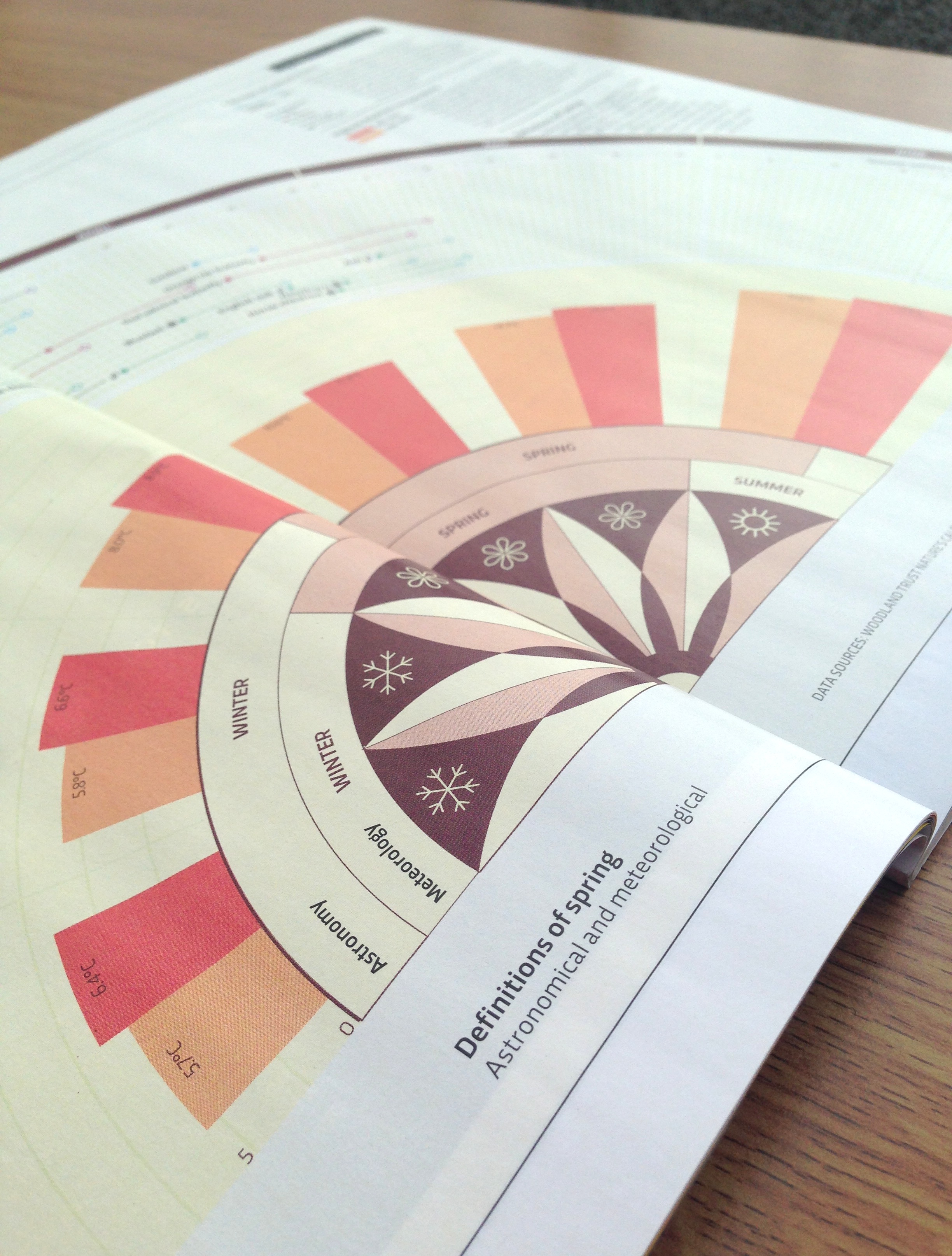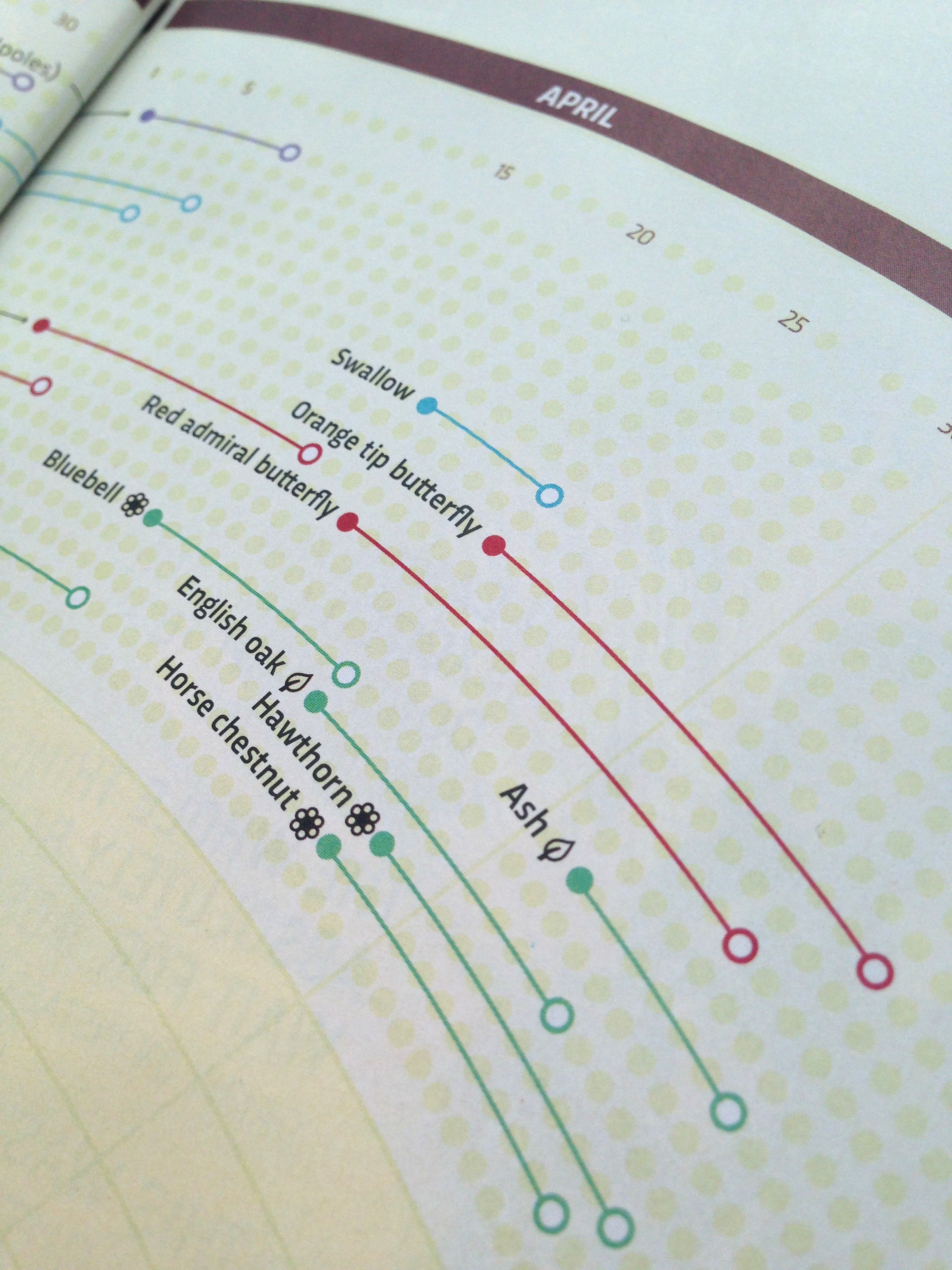When does spring begin?
For BBC Focus magazine, 2016
Printed infographic on the dates of spring created with information designer Valentina d'Efilippo for the March 2016 edition of the BBC's science and tech magazine, Focus.
We often hear that spring is arriving earlier than it used to, but what does this really mean? We used data from the Woodland Trust's Nature's Calendar Survey, which is based on hundreds of observations from members of the public, all patiently logging the dates of the signs of spring in the natural world – from the appearance of snowdrops and frog spawn to the first ash leaf. It's the best of citizen science.
We took the average date of these springtime events over the 1999-2015 period (1999 was when data started being collected across the whole UK), then compared them to the dates in 2001. Why 2001? Because temperatures that year were very close to the 1961-1990 average, which is used as a climate reference period by the Met Office. Since the dates of spring events is highly dependent on temperature and we lack consistent data on spring events from before 1999, 2001 is often used by scientists as a substitute benchmark. In other words, we can assume that in 2001 birds started nesting and trees burst into leaf on close to the same date that they did, on average, over the 1961-1990 period.
Every single spring event we looked at is now occurring days or weeks earlier than it probably did a generation or two ago. Song thrushes now start singing in late February, not mid March. Snowdrops are flowering in January. Hawthorns and horse chestnuts are adjusting their leafing and flowering schedules. Climate change is reorganising the world around us.
The ray-like bars show the upward creep of UK monthly daytime temperatures between 1961-1990 (orange bars) and 1981-2010 (red bars). Valentina came up with a wonderful half-radial design to visualise the data, reminiscent of a flower or a medieval sundial.
Research and copy: Miriam Quick
Design: Valentina d'Efilippo



